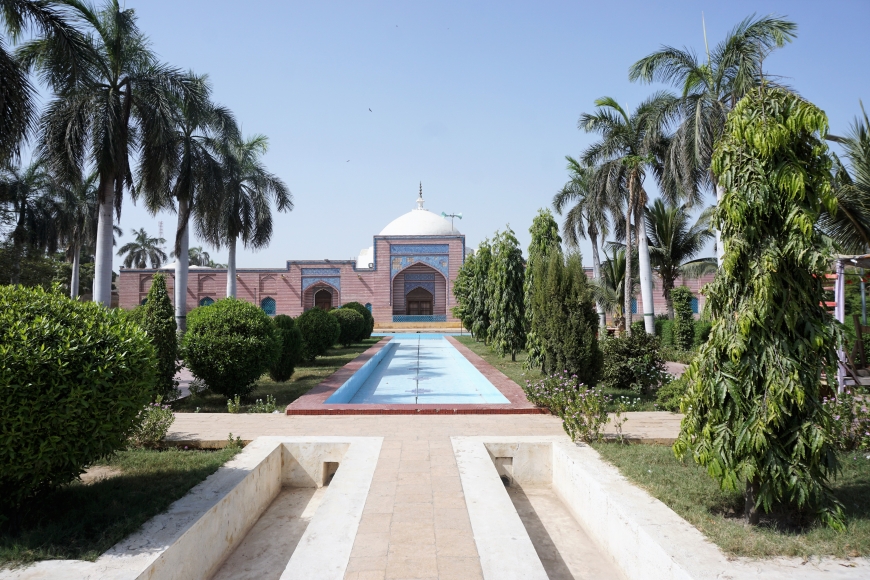
The Shah Jahan Mosque, also known as the Jamia Masjid of Thatta, is a 17th century building that serves as the central mosque for the city of Thatta, in the Pakistani province of Sindh. The mosque was built during the reign of Mughal emperor Shah Jahan, who bestowed it to the city as a token of gratitude. The mosque is considered to have the most elaborate display of tile work in South Asia, and is also notable for its geometric brick work – a decorative element that is unusual for Mughal-period mosques.
The mosque is located in eastern Thatta – the capital of Sindh in the 16th and 17th centuries before Sindh’s capital was shifted to nearby Hyderabad. It is located near the Makli Necropolis, a UNESCO World Heritage Site. The site is approximately 100 kilometres from Karachi.
The Shah Jahan Mosque’s architectural style is overtly influenced by Turkic and Persian styles. The mosque is characterized by extensive brickwork and the use of blue tiles, both of which were directly influenced by Timurid architectural styles from Central Asia − from where the previous rulers of Sindh, the Tarkhans, had hailed before the region was annexed by the Mughals in 1592.
The mosque is famous with its beautiful architecture with red bricks and blue colored glaze tiles probably imported from another Sindh’s town of Hala. The mosque has overall 100 domes and it is world’s largest mosque having such number of domes. It has been built keeping acoustics in mind. A person speaking inside one end of the dome can be heard at the other end. It has been on the tentative UNESCO World Heritage list since 1993.
The mosque is a heavy brick structure of simple construction built upon a stone plinth, with heavy square pillars and massive walls, which is centered on a courtyard 169′ x 97′. The prayer chamber is of a similar size. Both are covered by large domes. On the north and south, two aisled galleries open by means of arcades onto the courtyard. Ninety-three domes cover the entire structure and are probably the cause of a remarkable echo, which enables the prayers to be heard in any part of the building. The mosque contains the most elaborate display of tile-work in the Indo-Pakistan sub-continent. The two main chambers, in particular, are entirely covered with them. Their domes have been exquisitely laid with a mosaic of radiating blue and white tiles. Stylish floral patterns have the seventeenth-century Kash work of Iran, which decorate the spandrels of the main arches and elsewhere geometrical designs on square tiles are disposed of in a series of panels.
There is a vast lawn, footpath, and recreational area. Tourists from the country and abroad can visit the historical mosque of seventeenth-century architecture. The touristic facilities are available at Shah Jehan Restaurant of Sindh Tourism Development Corporation at Thatta.
District: Thatta
Visit hours:Summer: 8:00 AM to 7:00 PM. Winter: 9:00 AM to 6:00 PM
Location
| Shah Jahan Masjid Thatta |
| Shah Jahan Mosque, Thatta, Sindh, Pakistan |